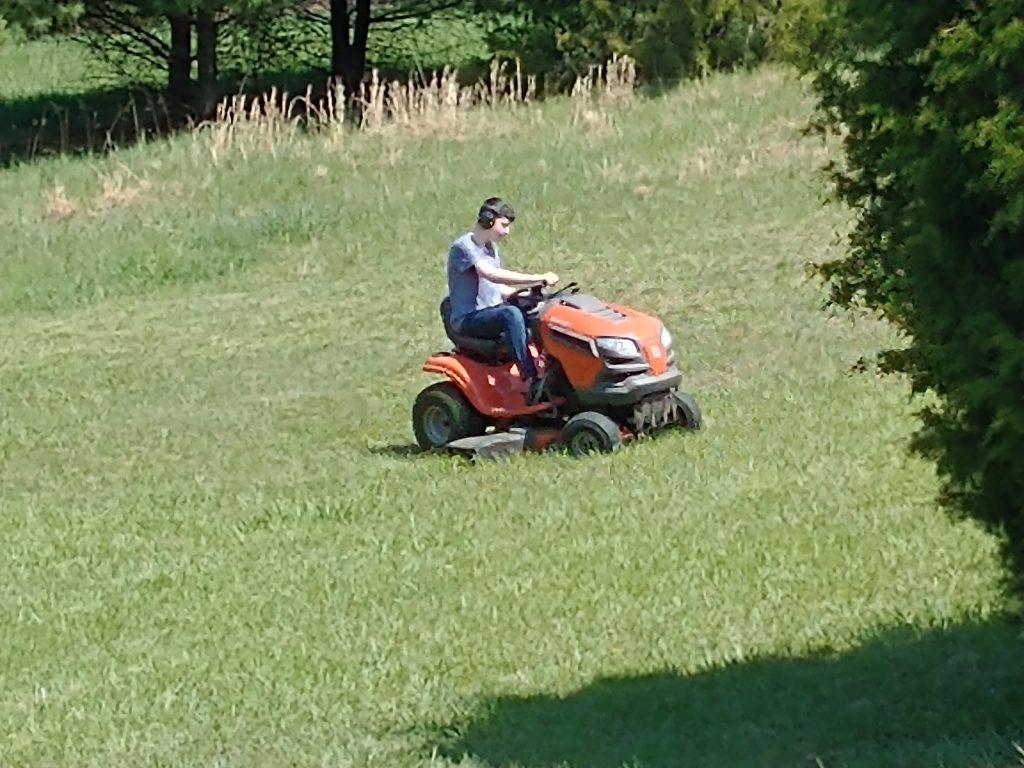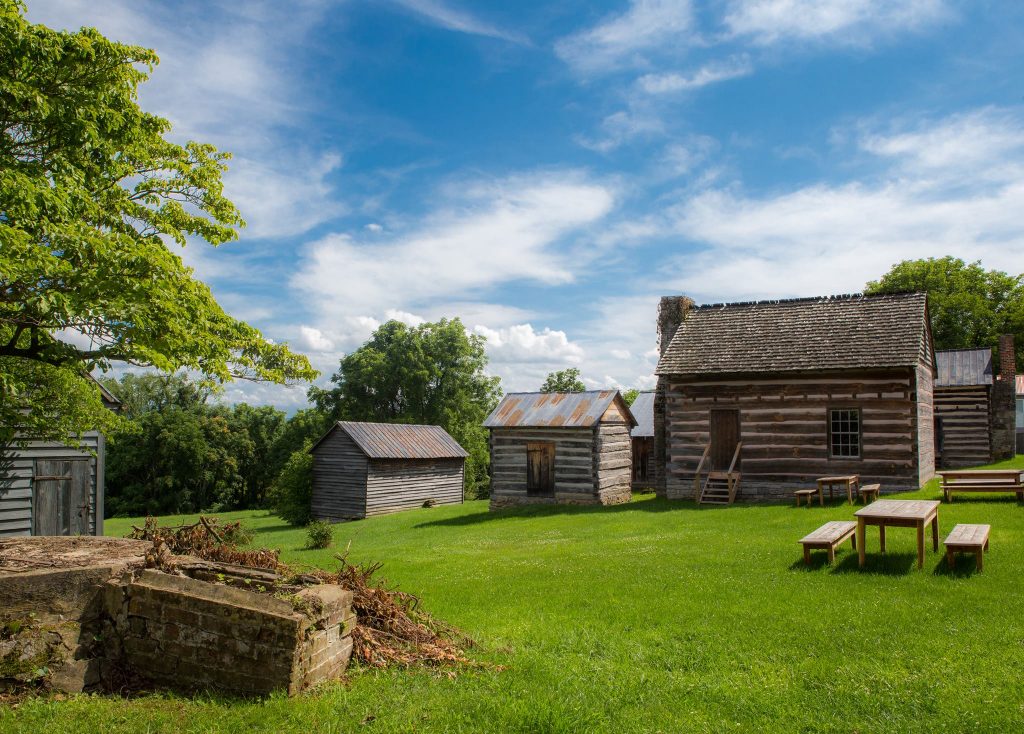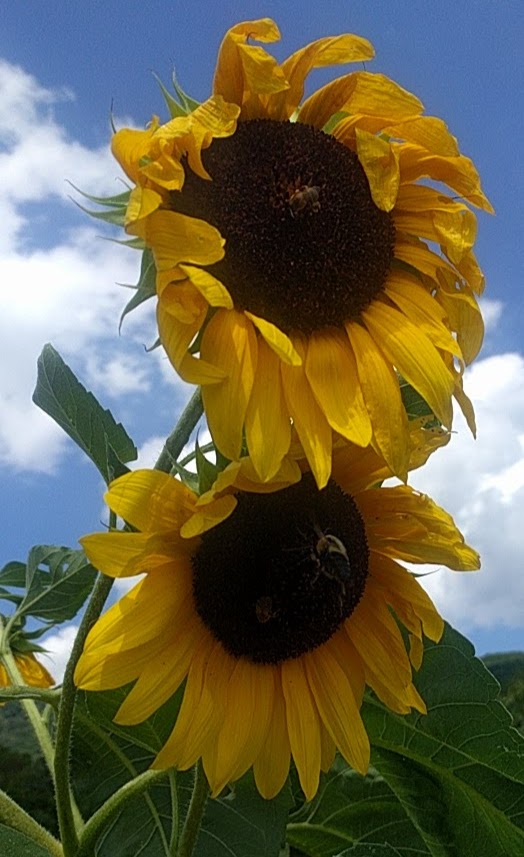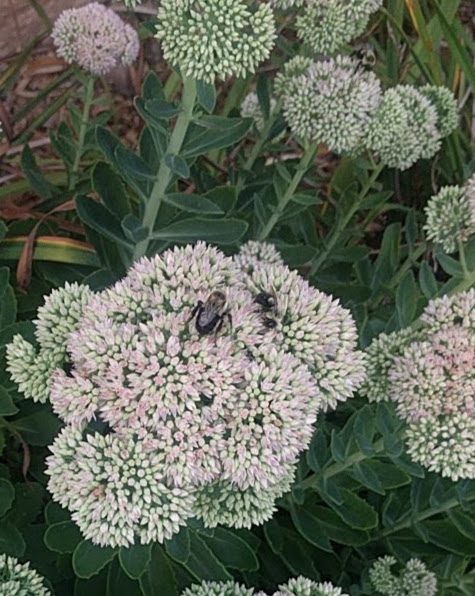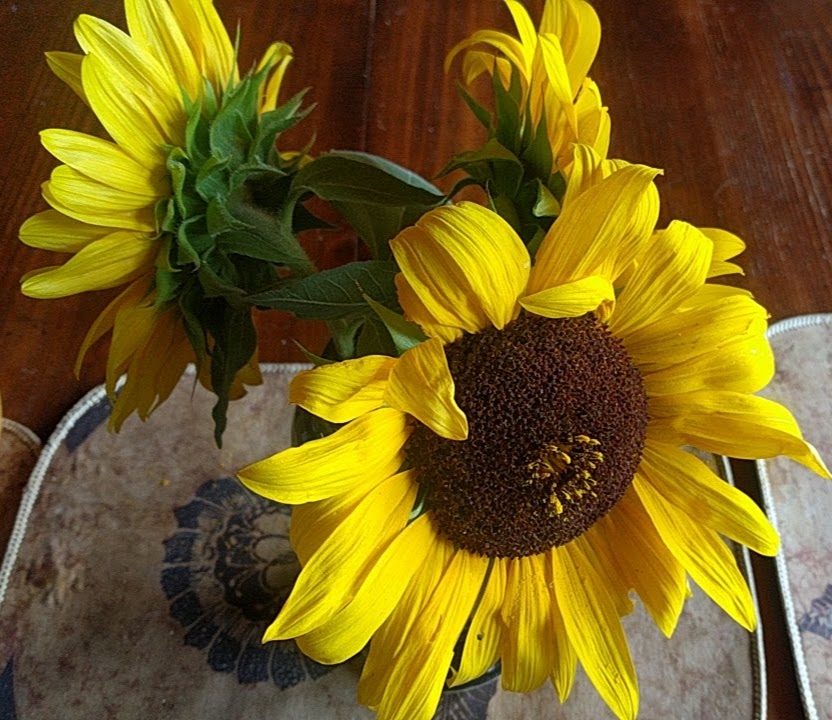Part of the excitement of this new project is the help that is offered by near and far friends. Friends I have met through this blog and friends that I have met through other friends. The local one, recently introduced to me by a spinner friend, with her husband has 14 hives and she was excited to see our set up. She came over yesterday and made a few suggestions. One was to lower the bottom strand of the electric fence as it was high enough for skunks to go under it without touching it. She said a skunk would scratch at the front of the hive at night, causing bees to come out to examine why and get picked off as they left the hive.
Last night after dinner, bee jacket and veil put donned, fence equipment box hauled down to the enclosure and the electric fence reworked with strands 6″ off the ground, 14″ off the ground, 30″ and about 42″. This should discourage most of our local predators. There are now 4 strands instead of 3, lower and closer together. If I can figure out how to use the volt meter, I will test it’s strength.
When the enclosure was reached, all 4 feeders were empty and the hives were very active. After fencing was finished, syrup was made and the feeders filled. The activity at the hives was encouraging and many of the bees were out foraging. Soon it will be warm enough and they will be settled in enough that the feeders can be removed.
She also suggested placing a brick or rock on top of each hive. That didn’t get done today but will tomorrow.
The distant friend from the blog has offered many suggestions on predator deterrent and winter feeding, providing a website link and all that has helped and will help as I move forward with this project.
I did learn that that the bee suit is very hot when the outdoor temperature is above 70f. I can just image what it will be like come August. But the bees are very docile. I have filled their feeders from behind the hives twice, reaching over to pull the feeder to fill and today mowed a 10 foot wide path in front of the electric fence both with no protection on and no bees bothered me.
None of this would have been possible without our youngest son asking to put hives on our property and teaching me how to work with them between his trips up here to check on them.
Our local teenage grandson came today for riding mower lessons after farmer’s market. It was nice having most of it done while I stayed on the porch or in the house. Since this was his first time, I did the “difficult” parts, the steeper embankments, orchard, around obstacles, and the section below the garden that used to be garden and is very rough. He did a great job and seemed to have fun zooming around the yard.
